We take plywood for granted, but since the 1850’s it has literally shaped contemporary design. “Plywood, Material of the Modern World” at the V&A London, tells the little known story of this common material.
The exhibition design makes good use of the same material it celebrates. Fiberglass coated entry walls with a slick “surfboard” feeling open into an intensely red space. Exhibition elements mimic the layered structure of plywood; tiered bases, sandwiched area signs, and a striped motif. The layers are staggered, engraved, cut through and alternate colors. Even the slightly raised red flooring suggests a bottom layer. The width of the groove engraved in the front of each plywood base is calculated to support labels at the right angle. Modular pedestal labels are designed to insert into the same groove, making all the labels easy to position at the last minute or reposition as needed during install.
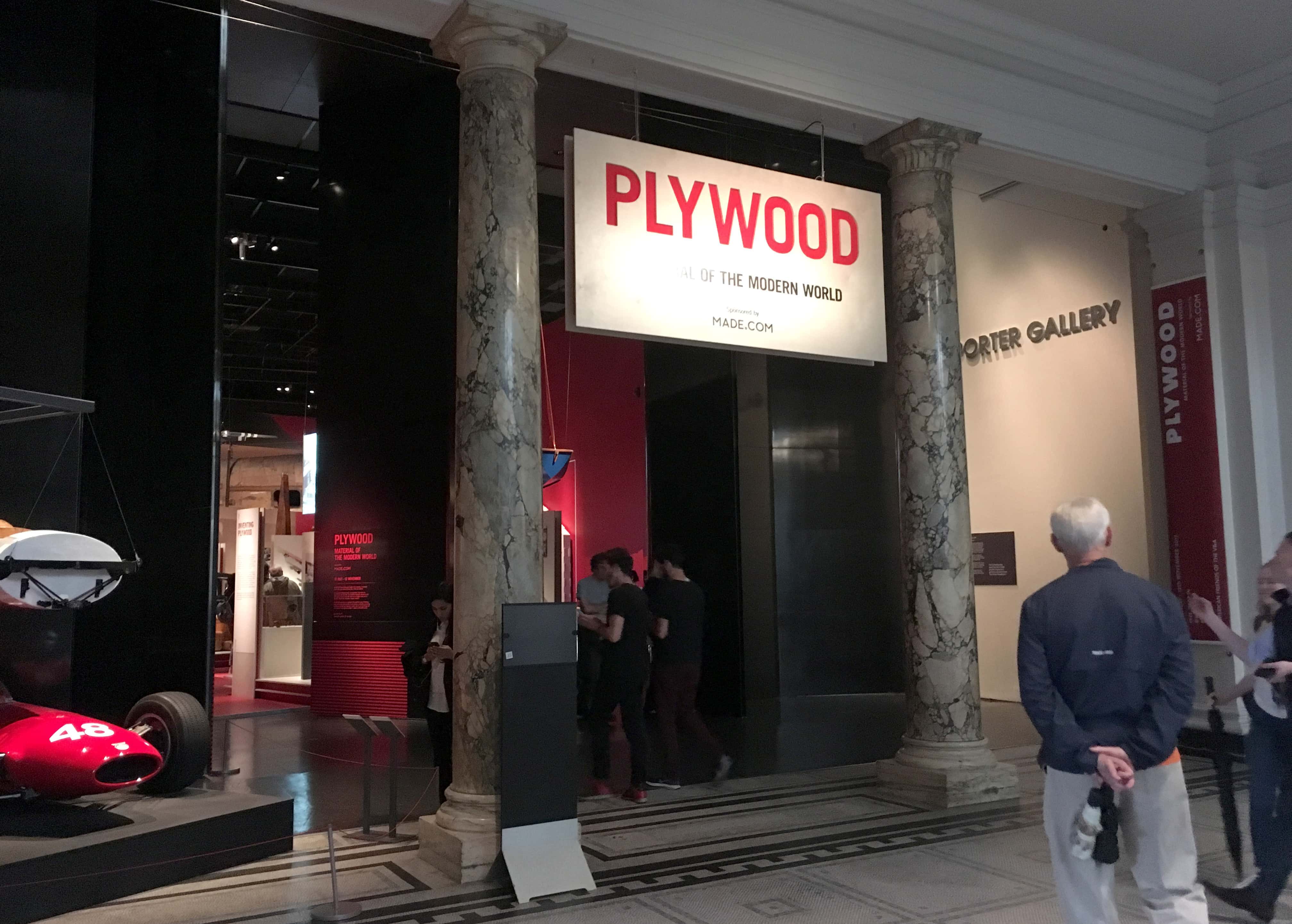
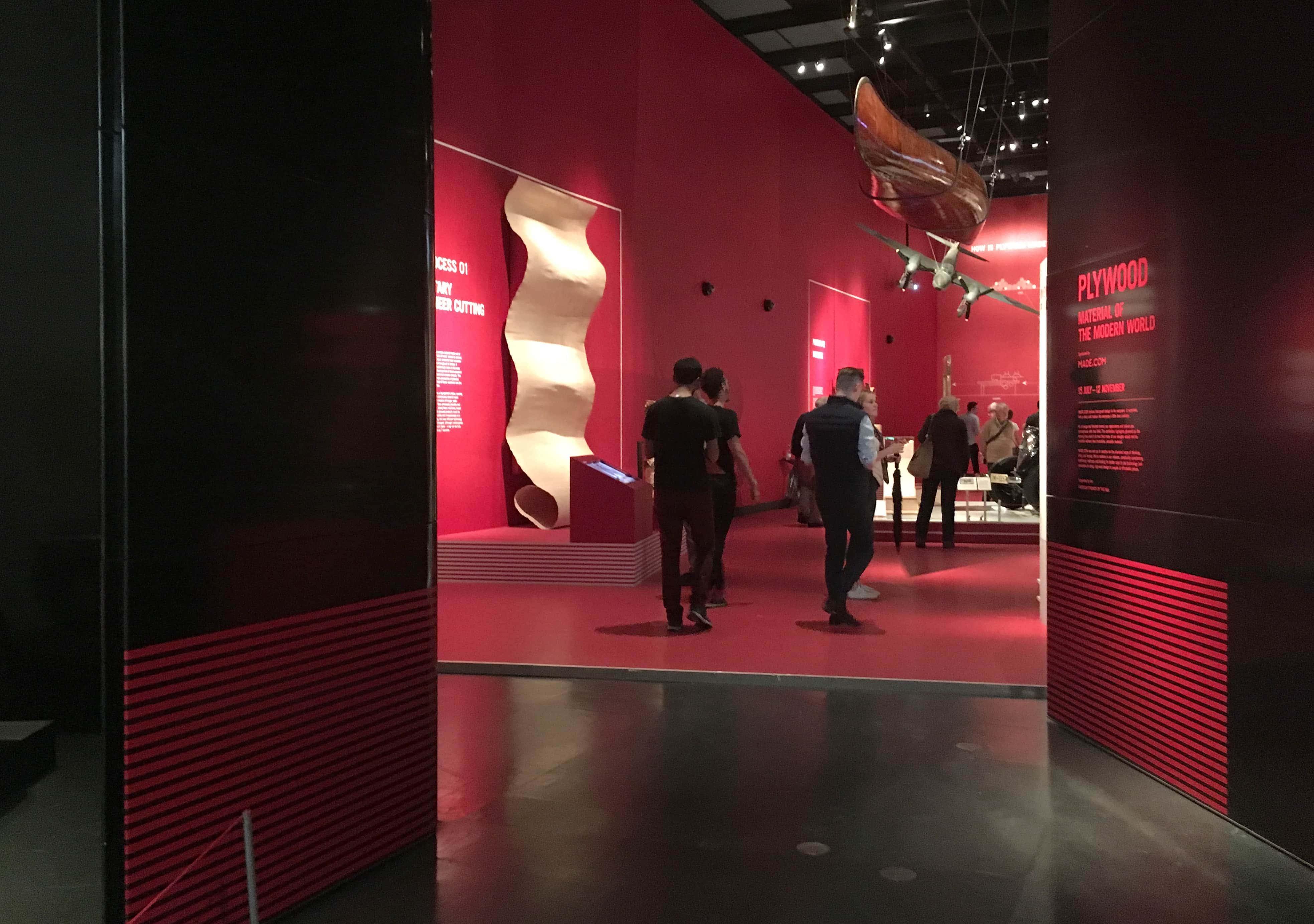 To maximize the use of a small exhibition space, a built alcove reveals early plywood construction and doubles as a projection surface for upper videos, viewed from the visitor pathway that loops around it. The exhibition extends out to the museum’s courtyard with ice skating shelters designed and constructed by Canadian Patkau Architects.
To maximize the use of a small exhibition space, a built alcove reveals early plywood construction and doubles as a projection surface for upper videos, viewed from the visitor pathway that loops around it. The exhibition extends out to the museum’s courtyard with ice skating shelters designed and constructed by Canadian Patkau Architects.
Explanations of three milestones in plywood (rotary veneer cutting, moulding and digital cutting techniques), ring the outer red walls in outlined arenas with large scale diagrams. The organization is intuitive. Visitors turn to the outer walls for the history of manufacturing and back to the center area to focus on historical objects; from an 1875 molded chair and Antarctic expedition packing crates, to car and airplane parts. The center is rich with thoughtfully placed objects, on multiple plains from floor level to airspace.

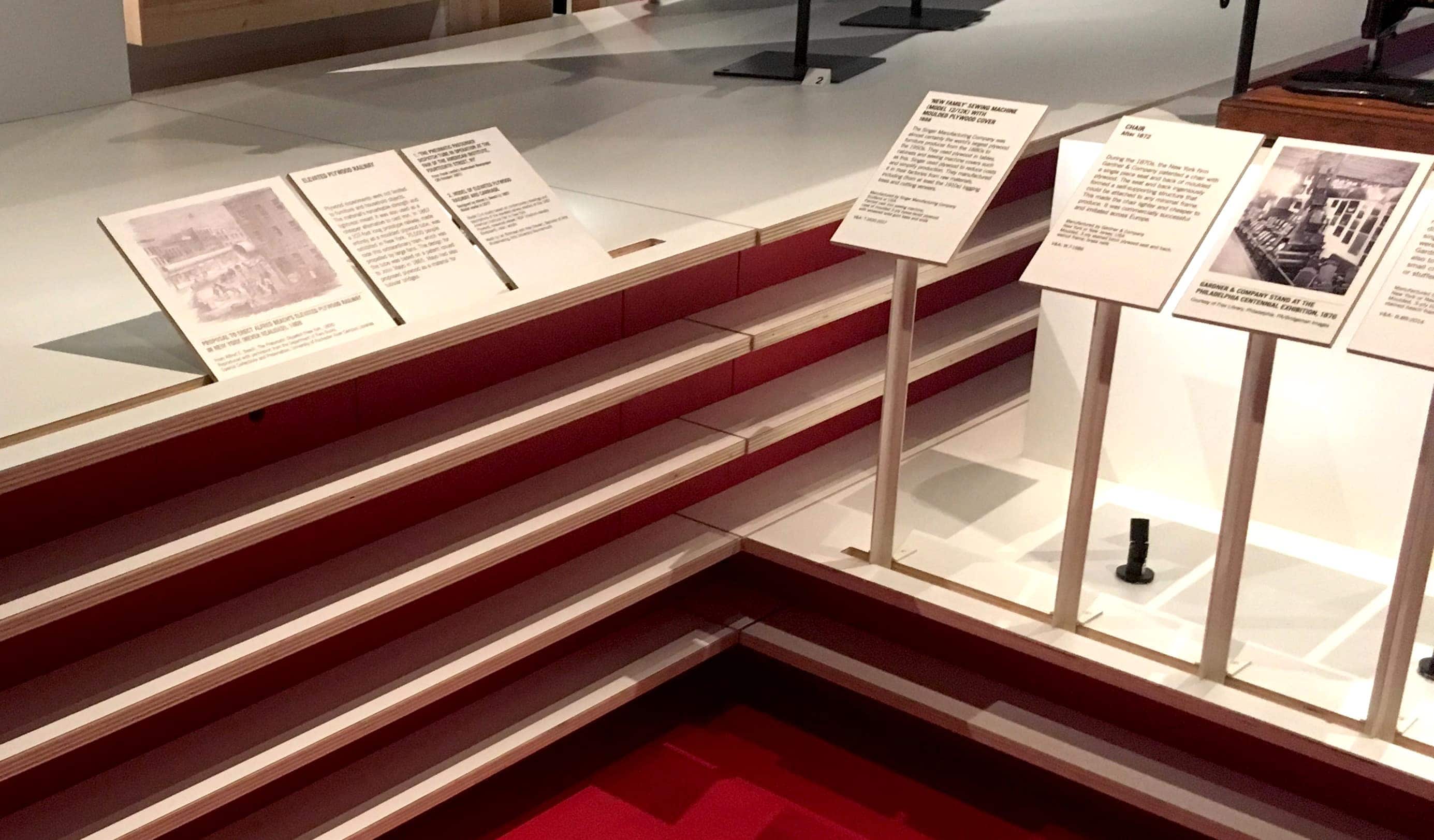 The assumption here is that the history of a material includes not only science and technology, but it’s changing reputation and popular perception over time. Presenting design through the lens of a single material makes it appealing to both the general public and specialists. It’s a powerful way to be inclusive of multiple levels of focus and interests; from environment to manufacturing, structure, function, design aesthetic, and history. Museums tend to separate content, but in reality its all connected. Ironically, a simple, singular theme often leads to the richest web of connections and understanding.
The assumption here is that the history of a material includes not only science and technology, but it’s changing reputation and popular perception over time. Presenting design through the lens of a single material makes it appealing to both the general public and specialists. It’s a powerful way to be inclusive of multiple levels of focus and interests; from environment to manufacturing, structure, function, design aesthetic, and history. Museums tend to separate content, but in reality its all connected. Ironically, a simple, singular theme often leads to the richest web of connections and understanding.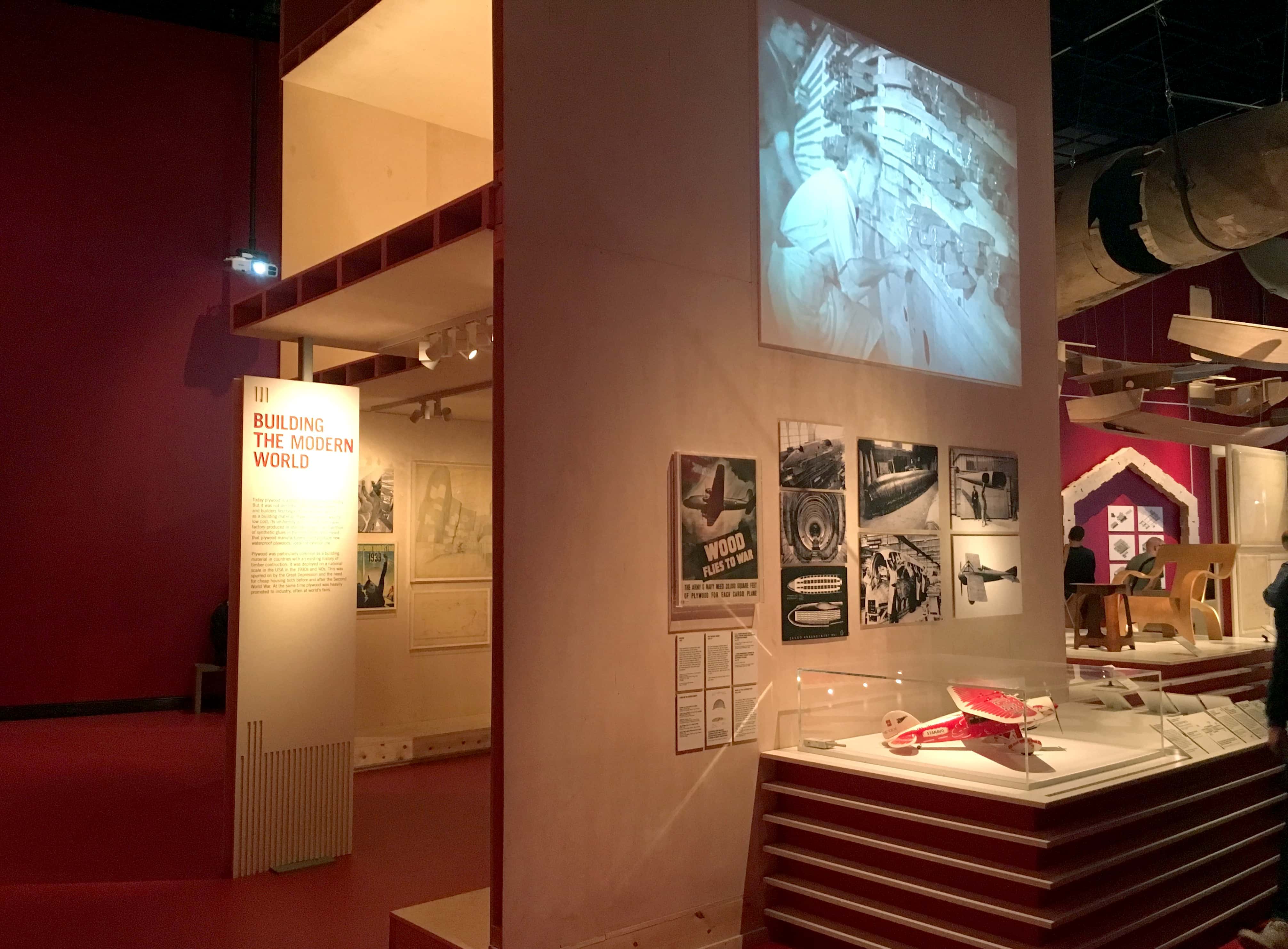



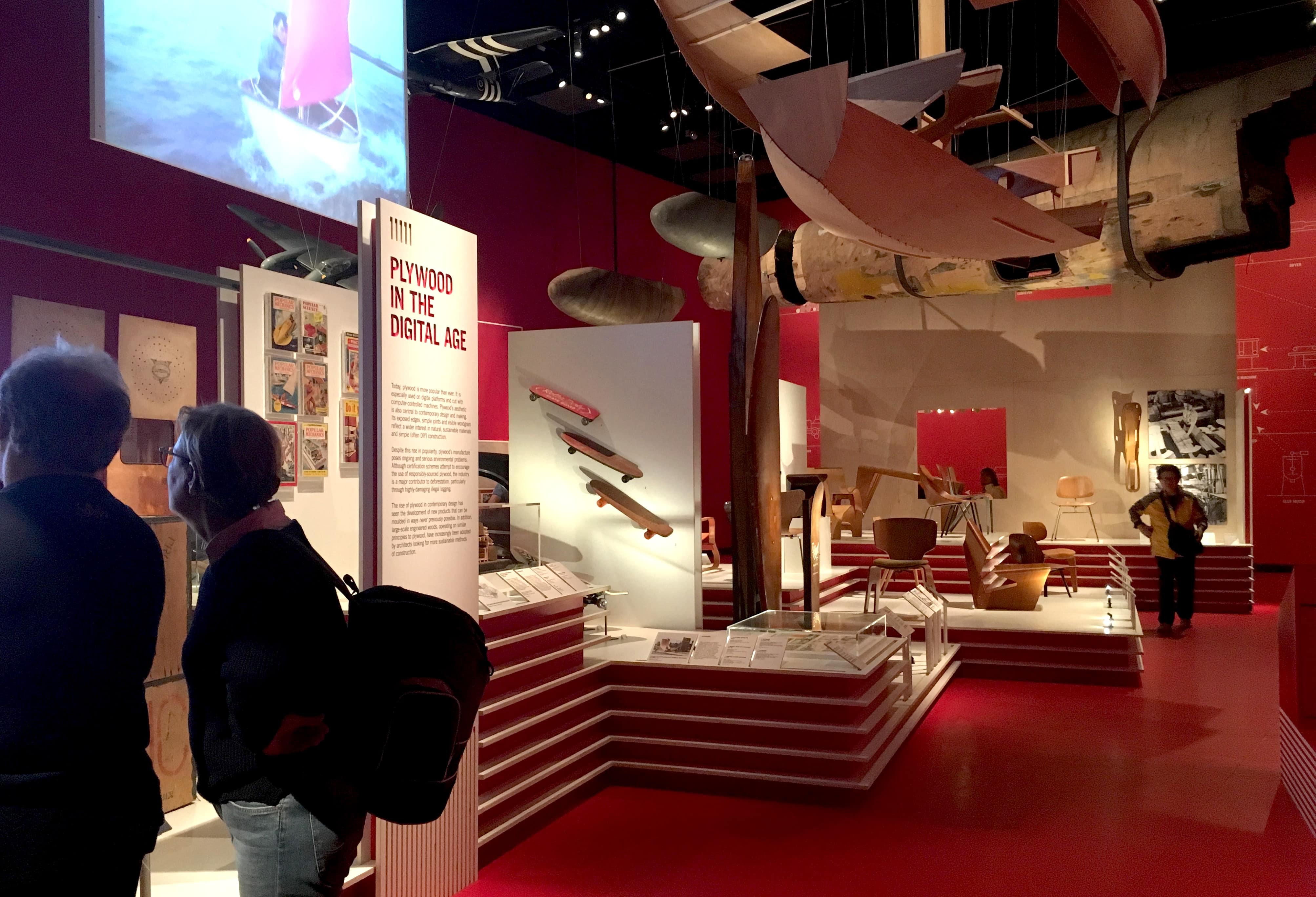

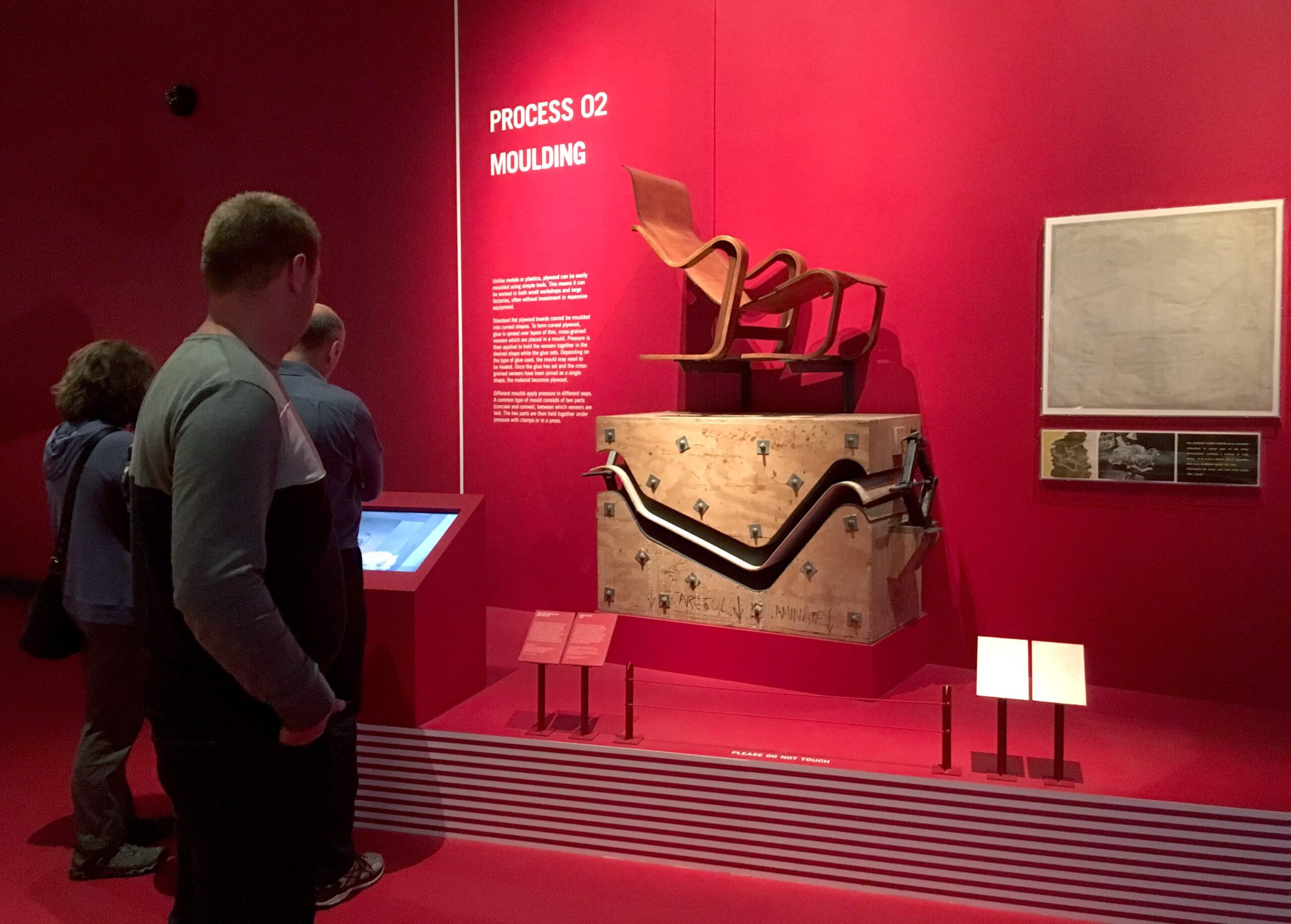
Leave a Reply
You must belogged in to post a comment.